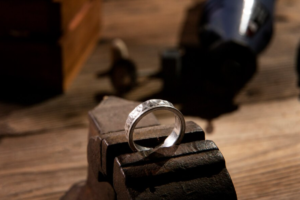If you’ve ever browsed online or walked through a bustling street market, chances are you’ve come across replica watches, especially fake Rolex watches. At first glance, the differences between these imitations and the real thing might not be obvious. They both have the look, the logos, and sometimes even the weight of an authentic timepiece. But the reality behind replica watches, particularly fake Rolexes, is a bit more complex. Let’s break down why people buy them, what to look out for, and whether they’re worth your time (and money).
The Appeal of Replica Watches
There’s no denying the allure of a luxury watch. Brands like Rolex are synonymous with success, sophistication, and status. However, not everyone has the budget to shell out thousands of dollars for a single timepiece. This is where replica watches come into play. These watches mimic the design of high-end brands at a fraction of the cost. For many, it’s an easy way to wear a piece of luxury without the hefty price tag.
Replica watches, especially high-quality ones, are designed to look just like the originals. The craftsmanship can be impressive, with manufacturers sometimes using similar materials and even replicating the intricate details found in luxury watches. It’s not uncommon for a high-grade replica Rolex to fool even a seasoned watch enthusiast—at least at first glance.
Fake Rolex: Is It Worth It?
The Rolex brand, in particular, is a frequent target for replica manufacturers. A genuine Rolex can set you back anywhere from several thousand to hundreds of thousands of dollars, depending on the model. In contrast, a fake Rolex might cost anywhere from $100 to a few hundred dollars.
But is it worth buying a fake Rolex?
It really depends on your expectations. If you’re looking for a watch that simply looks like a Rolex and you don’t care about the brand’s history, precision, or the prestige that comes with owning an authentic piece, then a replica might seem like a reasonable choice. However, there are a few important things to keep in mind before making that decision:
- Quality Varies Greatly: Not all fake Rolex watches are created equal. While some high-end replicas can look almost indistinguishable from the real thing, others might fall apart after a few months of use. It’s essential to do your research, read reviews, and understand the difference between a poorly made fake and a high-quality replica. The better replicas will use stainless steel, sapphire glass, and even Swiss movements—though they’re still not up to the standard of an authentic Rolex.
- Performance and Durability: A genuine Rolex isn’t just a pretty accessory; it’s a marvel of engineering. Rolex watches are known for their precision, durability, and long-lasting performance. A fake Rolex, on the other hand, will not offer the same level of performance. Over time, you’ll likely notice issues with timekeeping, water resistance (or lack thereof), and general wear and tear.
- No Resale Value: A real Rolex can sometimes increase in value over time, especially if it’s a rare or limited edition model. People often buy them as an investment, knowing that they can sell the watch in the future for a good return. A fake Rolex, however, has no resale value. The minute it leaves the seller’s hands, its worth plummets to near zero.
- The Ethical Dilemma: There’s also an ethical question to consider. Buying a fake Rolex contributes to a counterfeit industry that often exploits labor and resources, and is linked to other illegal activities. While it’s easy to think of buying a replica as harmless, it’s important to understand the broader implications.
Why People Still Buy Them
So, why do people still buy fake Rolex watches despite all the drawbacks?
For some, it’s about owning a status symbol without the price tag. They want the look and feel of luxury but don’t have the means to afford an authentic Rolex. Others see it as a temporary solution—a “starter” luxury watch to test the waters before investing in the real thing.
And then there are those who simply enjoy the aesthetic of Rolex watches but don’t see the point in spending a fortune on a timepiece. To them, the watch is just an accessory, and as long as it looks good, they don’t care if it’s fake.
The Risks of Wearing a Fake Rolex
However, wearing a fake Rolex comes with its own risks. If you’re caught trying to pass off a replica as the real deal, it can be embarrassing, especially in social or professional settings. There’s also the possibility of being called out by someone who recognizes the watch as a fake, which can lead to uncomfortable situations.
In some cases, trying to sell or resell a fake Rolex can land you in legal trouble. Counterfeiting is illegal, and knowingly selling fake goods can result in fines or even jail time.
Conclusion
While replica watches, including fake Rolexes, might offer a tempting shortcut to luxury, they come with significant downsides. Whether it’s the lack of quality, ethical concerns, or the potential embarrassment of being caught with a fake, it’s important to weigh the pros and cons carefully. If you’re simply looking for a stylish watch, there are many affordable brands that offer high-quality, legitimate timepieces without the risks associated with counterfeit goods.

















